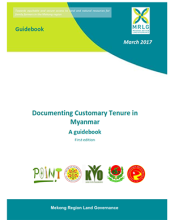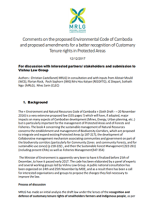Land Library
Welcome to the Land Portal Library. Explore our vast collection of open-access resources (over 74,000) including reports, journal articles, research papers, peer-reviewed publications, legal documents, videos and much more.
/ library resources
Showing items 1 through 9 of 25.Resources, including minerals and metals, underpin the world’s economies for almost all sectors, providing crucial raw materials for their industrial processes.
The food system challenges require simultaneous action across different sectors and concerted efforts of diverse players in food systems.
The Lawra district of the Upper West region was selected as the case study. This study compared crop yields for FMNR and non-FMNR farmers. FMNR farmers are classified as having at least 8 trees per acre, with an average of 13 trees per acre (33 per ha) and a maximum of 40.
The Mekong Region Land Governance (MRLG) project, MLIKE (Mekong Land Information and Knowledge Exchange), and the Land Portal co-facilitated an online dialogue on “Responsible Large Scale Agricultural Investments in the Mekong Region” on 09-27 October 2017.
This guidebook provides conceptual, legal and practical tools and resources to help civil society organizations guide communities through the process of documenting customary tenure at the local level.
The « Environment and Natural Resources Code of Cambodia » (Sixth Draft – – 20 November 2016) is a very extensive proposed law (535 pages !) which will have, if adopted, major impacts on many aspects of Cambodian development (Mines, Energy, Urban planning, etc..) but is particularly important for
This report is the product of a two-year collaboration between the four partners to: (i) improve the understanding of the complex relationship between women and natural resources in conflict-affected settings, and (ii) make the case for pursuing gender equality, women’s empowerment and sustainabl
Almost all societies acknowledge the concept of state or public landownership in which property rights are vested in a public body on a national, regional or community level. State and public land tenure arrangements define rules for the distribution, use and protection of publicly vested lands.
The articles in this volume supplement FAO Land Tenure Studies 10, Compulsory acquisition of land and compensation. The latter publication explains what compulsory acquisition and compensation are and what constitutes good practice in this area.




